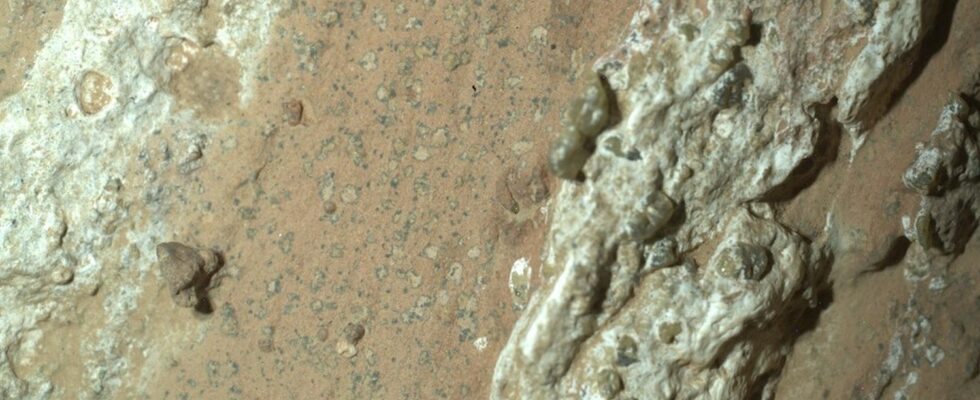This enigmatic rock, which was found in a valley, at the heart of which a river may have been located, quickly got scientists excited.

Published
Reading time: 2 min

This is a major new step in the search for traces of ancient life on the Red Planet. NASA’s Perseverance rover has made an important discovery by collecting a rock from Mars that could contain fossilized microbes, the American space agency announced on Thursday, July 25. The Red Planet, whose current climate is extremely arid, had abundant rivers and lakes billions of years ago, which have now evaporated.
On July 21, this rover took a sample of a rock called “Cheyava Falls” from the surface of Mars, shaped like an arrowhead, and could contain fossilized microbes dating back several billion years, when water was present on the planet. This enigmatic rock, found in the Neretva Valley, which once housed a river, quickly got scientists excited. And for good reason: three evocative clues of ancient microbial life were observed on its surface.
White veins of calcium sulfate run the length of the rock, NASA says, a sign that water once flowed through the rock. Between the veins is a central reddish area that is teeming with organic compounds, according to an instrument on the rover, the “Sherloc,” which is used to identify biological signatures on rocks.
Finally, small light spots surrounded by black, comparable to those of a leopard, were observed. These are similar to spots associated with the presence of fossilized microbes, according to the analyses carried out by the “Pixl” instrument, which studies the chemical composition.On Earth, this type of feature in rocks is often associated with fossilized traces of microbes that lived underground,” explains to AFP David Flannery, astrobiologist and member of the Perseverance scientific team.
To confirm that they are evidence of ancient microbial life, these samples will need to be analyzed in a laboratory on Earth. NASA plans to bring them back, thanks to another mission, scheduled for the 2030s.
